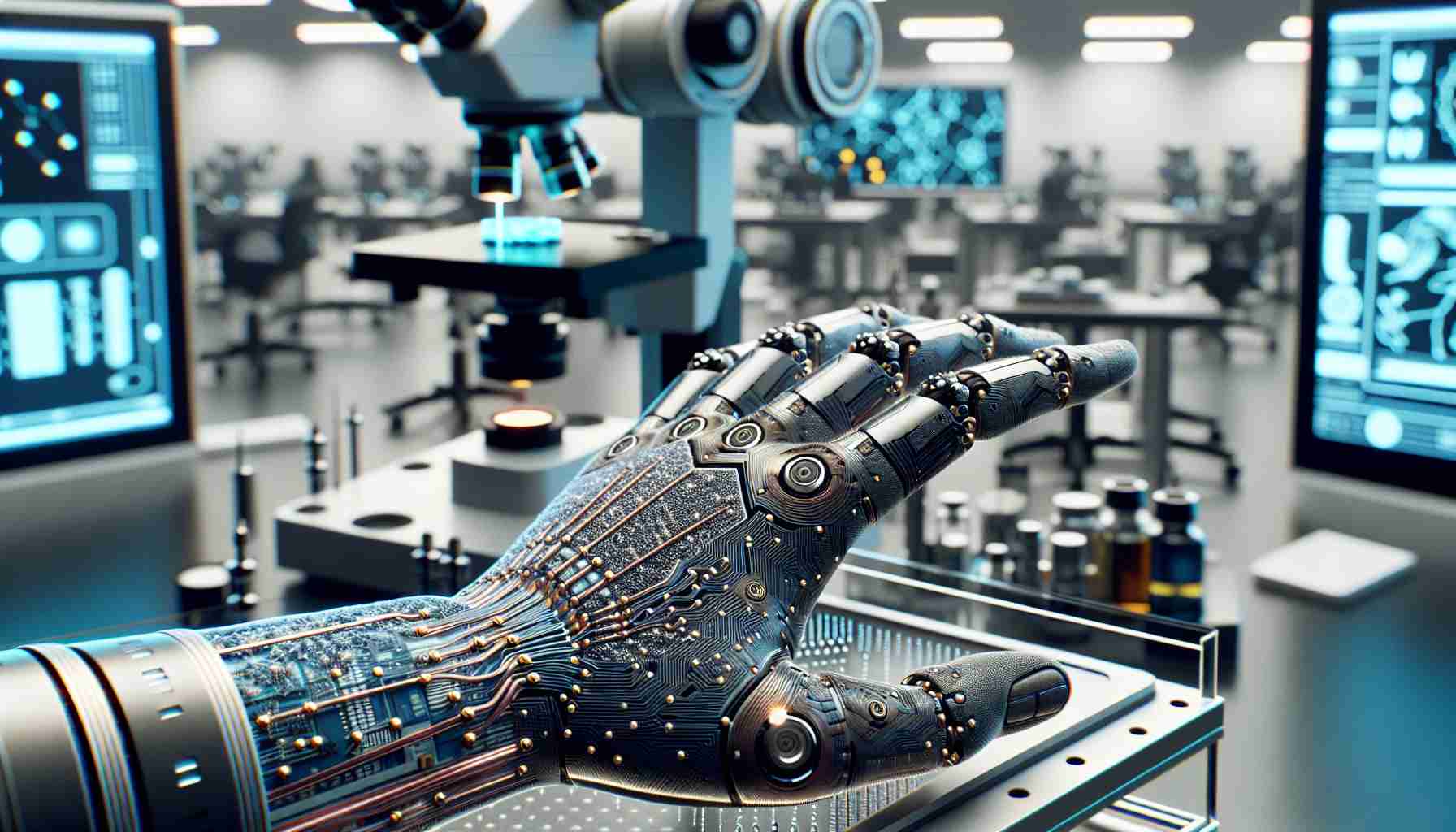Researchers at the University of Tokyo have made significant strides in the realm of robotic technology with their latest breakthrough in artificial skin development. Drawing inspiration from human ligament structures, the team has pioneered the use of perforation anchors to attach living skin efficiently onto robotic surfaces, enhancing facial expressions and interactions with humans.
The experimental living skin, cultivated in a lab setting, mimics the biological characteristics of human skin with its self-repairing abilities and soft, flexible nature. The application of this innovative skin onto robots results in more realistic facial expressions, ultimately boosting the naturalness and effectiveness of human-robot interactions.
Innovating the process of skin attachment, researchers have devised perforation anchors primarily composed of collagen and elastin, reminiscent of human ligaments crucial for anchoring skin to underlying tissues. Although the prototype may resemble more of a gummy candy than a human face, it paves the way for the creation of humanoid robots with self-healing skin.
Described in the journal Cell Reports Physical Science, the new method excels in adhering artificial skin to complex, curved, and even moving surfaces. By perforating small holes on the robot’s surface and applying a collagen gel followed by a layer of artificial skin, the gel fills the holes and secures the skin onto the robot, mimicking the structure of human ligaments.
Lead researcher Prof. Shoji Takeuchi explained, “By mimicking the structures of human skin ligaments and utilizing specially designed V-shaped perforations, we have found a way to connect skin to complex structures.” Various experiments, such as plasma treatment to enhance collagen penetration and tension tests to assess anchor effectiveness, have demonstrated the efficiency and strength of the perforation anchors in robotic skin development.
Revolutionary Advancements in Robotic Skin Development Unveiled
Researchers at the University of Tokyo are not only expanding the horizons of robotic technology but also pushing the boundaries of what artificial skin can achieve. While the latest breakthrough focused on attaching living skin to robotic surfaces using perforation anchors, there are additional noteworthy advancements in the field that deserve attention.
Key Questions:
1. What are the long-term durability and maintenance requirements of robotic skin with living components?
2. How do advancements in robotic skin development impact the future of prosthetics and medical robotics?
3. Are there ethical considerations surrounding the integration of living tissues into robotic systems?
Additional Facts:
Beyond the structural mimicry of human ligaments, the innovative approach taken by researchers incorporates bioengineered elements that enhance the functionality and realism of the robotic skin. These elements include bioactive molecules that promote tissue integration and sensor technologies for responsive interactions.
Challenges:
One of the primary challenges associated with integrating living skin onto robots is the need to ensure a sustainable environment for the living cells to thrive over extended periods. Additionally, the potential risk of immune responses or rejection reactions to the artificial skin poses a hurdle in achieving seamless integration with the robot.
Advantages and Disadvantages:
The advantages of incorporating living skin into robotic systems include increased tactile sensitivity, improved adaptability to environmental changes, and enhanced aesthetics for more lifelike interactions. However, disadvantages such as the complexity of maintenance, ethical dilemmas, and the cost of production may present obstacles to widespread adoption.
In conclusion, the field of robotic skin development is rapidly evolving, with each breakthrough opening up new possibilities and challenges. By addressing the key questions, overcoming the associated challenges, and weighing the advantages against the disadvantages, researchers aim to revolutionize human-robot interactions through the seamless integration of living tissues into robotic systems.
For further exploration of the latest advancements and research in robotic technology, visit University of Tokyo’s official website.

